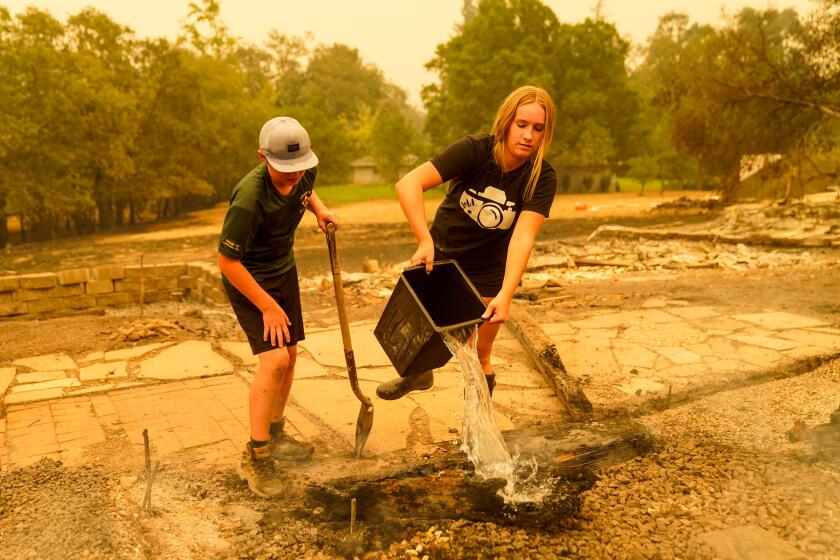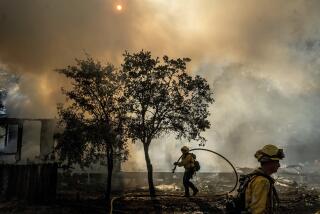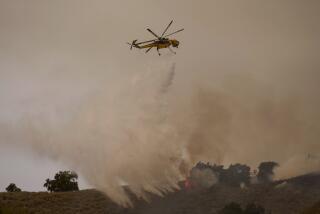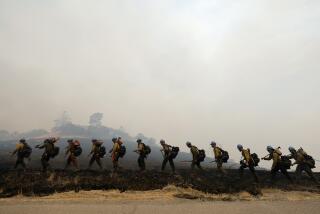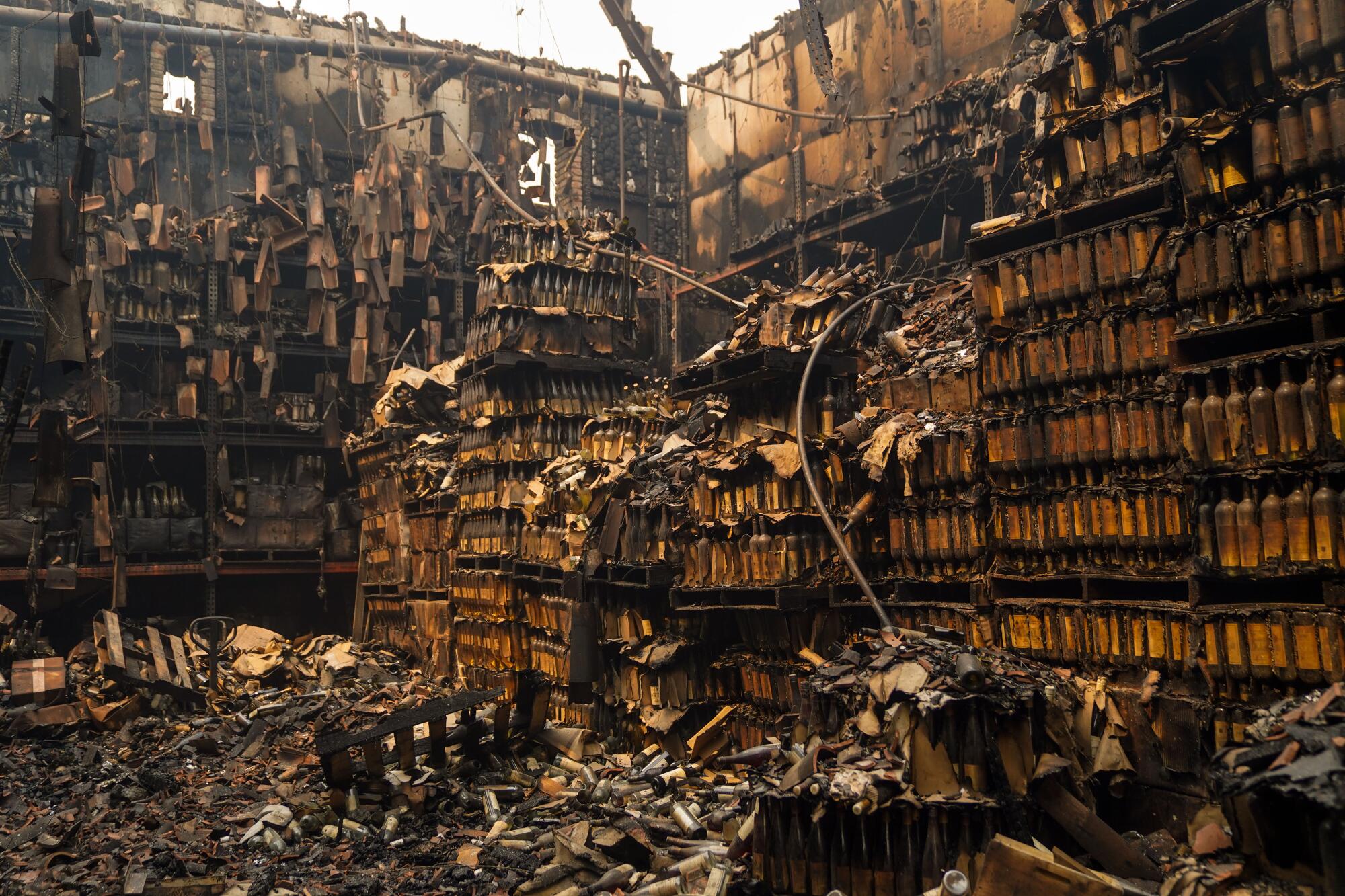
CALISTOGA, Calif. — The owners of the Castello di Amorosa winery spent $40 million re-creating a 13th century Tuscan castle in Napa Valley, replete with stone turrets and towers, and a small drawbridge.
When the Glass fire hit Amorosa and other Napa wineries Sunday and Monday, it did little damage to the front of the castle. But it badly scorched the back building and heated up a stone wall on a processing facility where thousands of wine bottles were stored, many now ruined.
Tuesday afternoon, the winery’s employees banded together to clear out and salvage what they could from the back storage area and offices above it. Vanessa Close, the castle’s accounting manager, hunched over a bin in the parking lot and sorted through piles of office supplies and paperwork.
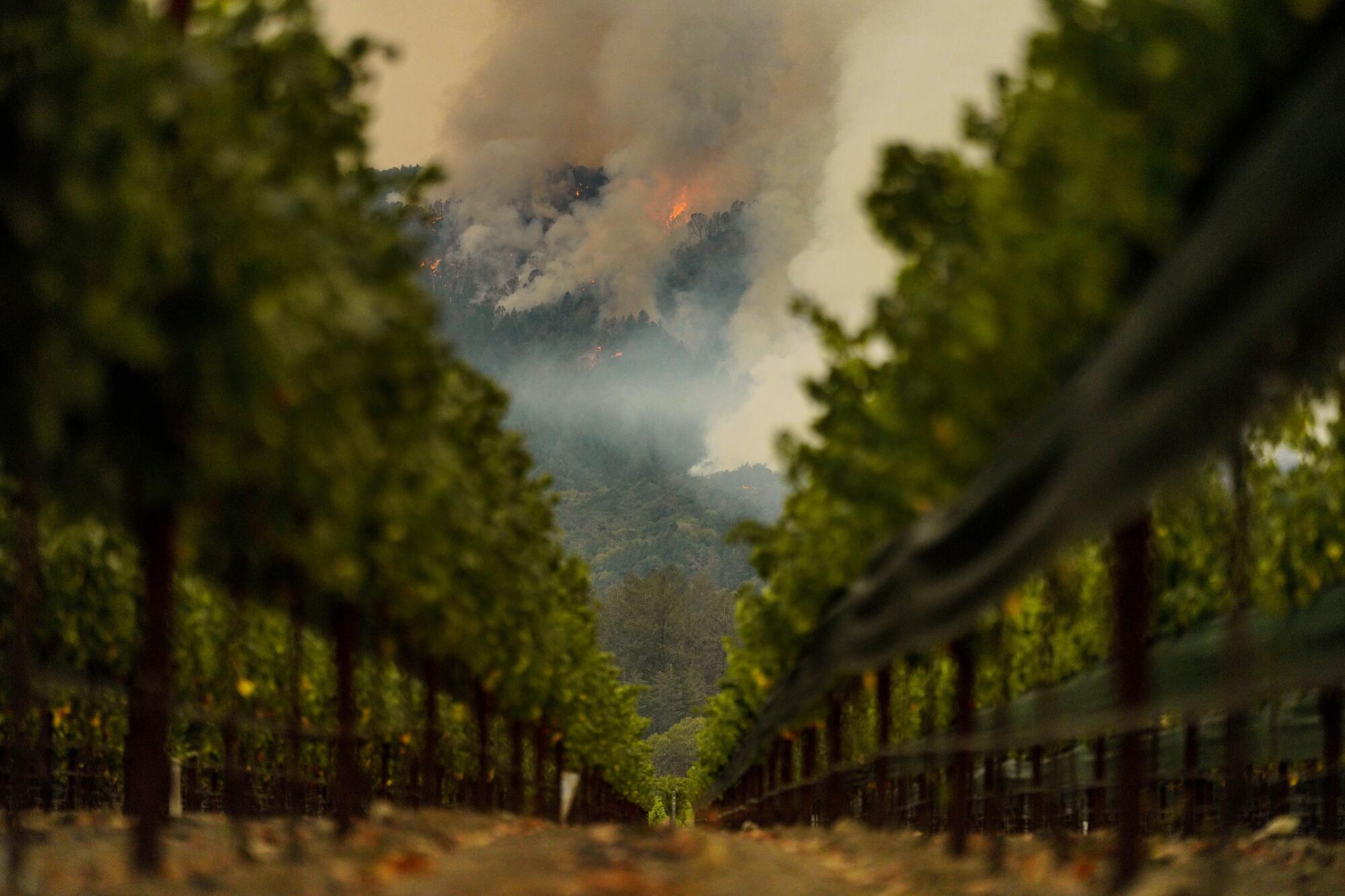
“It’s really unbelievable,” Close said about the winery’s partial devastation. “You think, it’s stone, how could that happen?”
It was yet another blow for a region that has suffered through several bad fire seasons, starting in 2017. This year, the pandemic closed tasting rooms, wildfire smoke threatened multimillion-dollar vintages, and now raging blazes have created a triple whammy for many who call California’s famed “wine country” home.
“I’m numb,” said Vince Tofanelli, owner of the Tofanelli Family Vineyard, another winery in Calistoga devastated by the Glass fire.
Fire stormed through California’s wine country Sunday night, destroying numerous homes and forcing thousands to flee, including in areas devastated by the Tubbs fire in 2017.
Tofanelli’s grandparents purchased the vineyard’s first parcel in 1929, but by Tuesday morning, all of its structures had been destroyed — including an old redwood barn, a water tower, two homes and outbuildings, he said.
He hadn’t been back to the property since evacuating Sunday but was crossing his fingers that the fire hadn’t ravaged the vines.
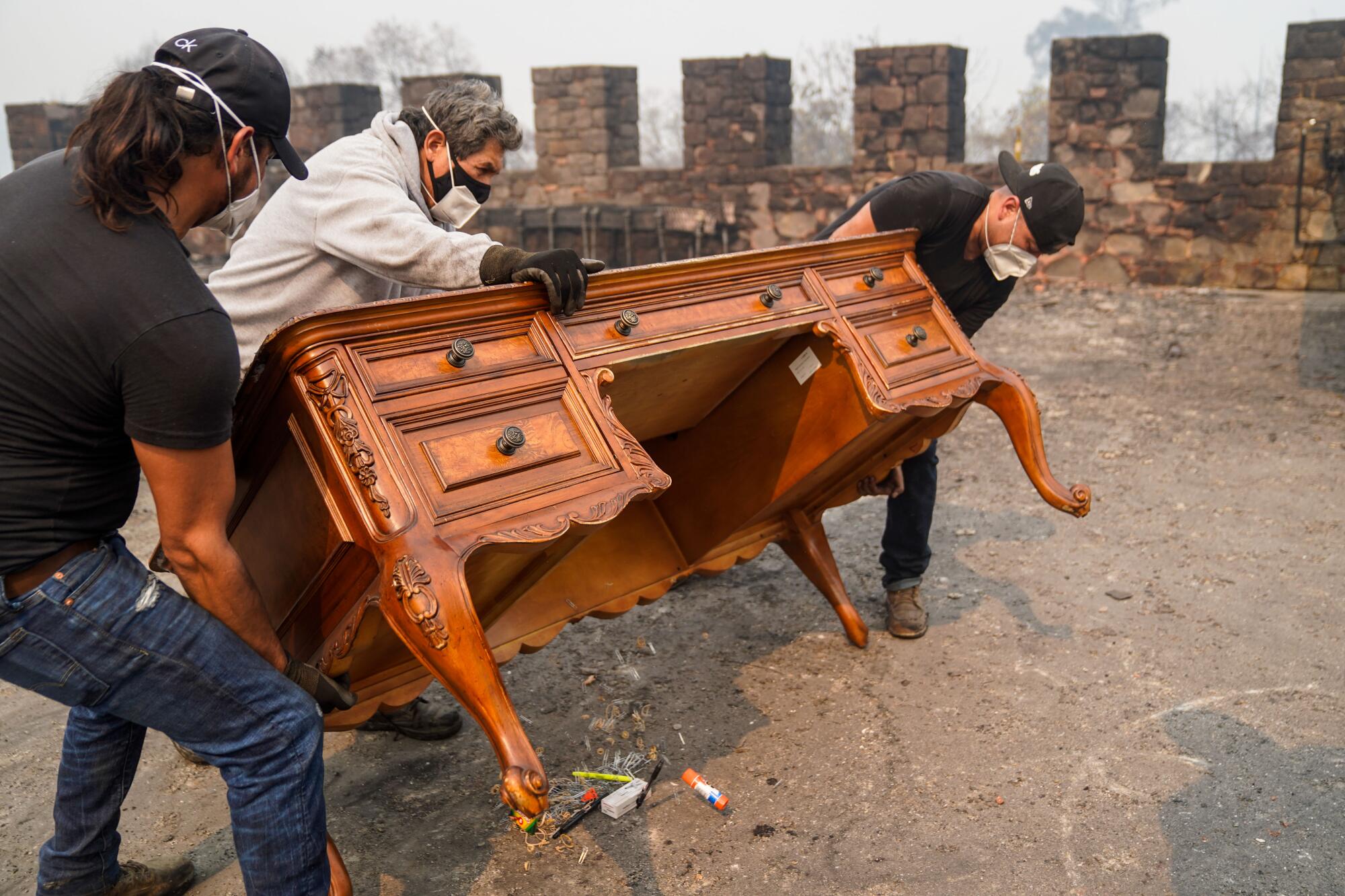
“I can’t begin to express my frustration with these continuing wildfires around here,” he said. “It’s very heartbreaking.”
The Glass fire ignited just before 4 a.m. Sunday and quickly ballooned to 40,000 acres in the span of just two days. At 0% containment, it straddles Napa and Sonoma counties, which together are home to more than 800 wineries, many family-owned.
It is the fourth major fire to hit the region since the Tubbs fire tore through Santa Rosa in 2017, and many in the area are beginning to grow weary.
“We are all dealing with significant fire fatigue,” said Sonoma County Sheriff Mark Essick during a news conference Tuesday. “Many people are feeling the effects, and many people are evacuating and have evacuated multiple times.”
But it’s not only the flames and frequent threat of evacuation. Tourism numbers took a significant hit after the Tubbs fire, and some experts now fear that regular ash and smoke will begin to damage the taste of their varietals.
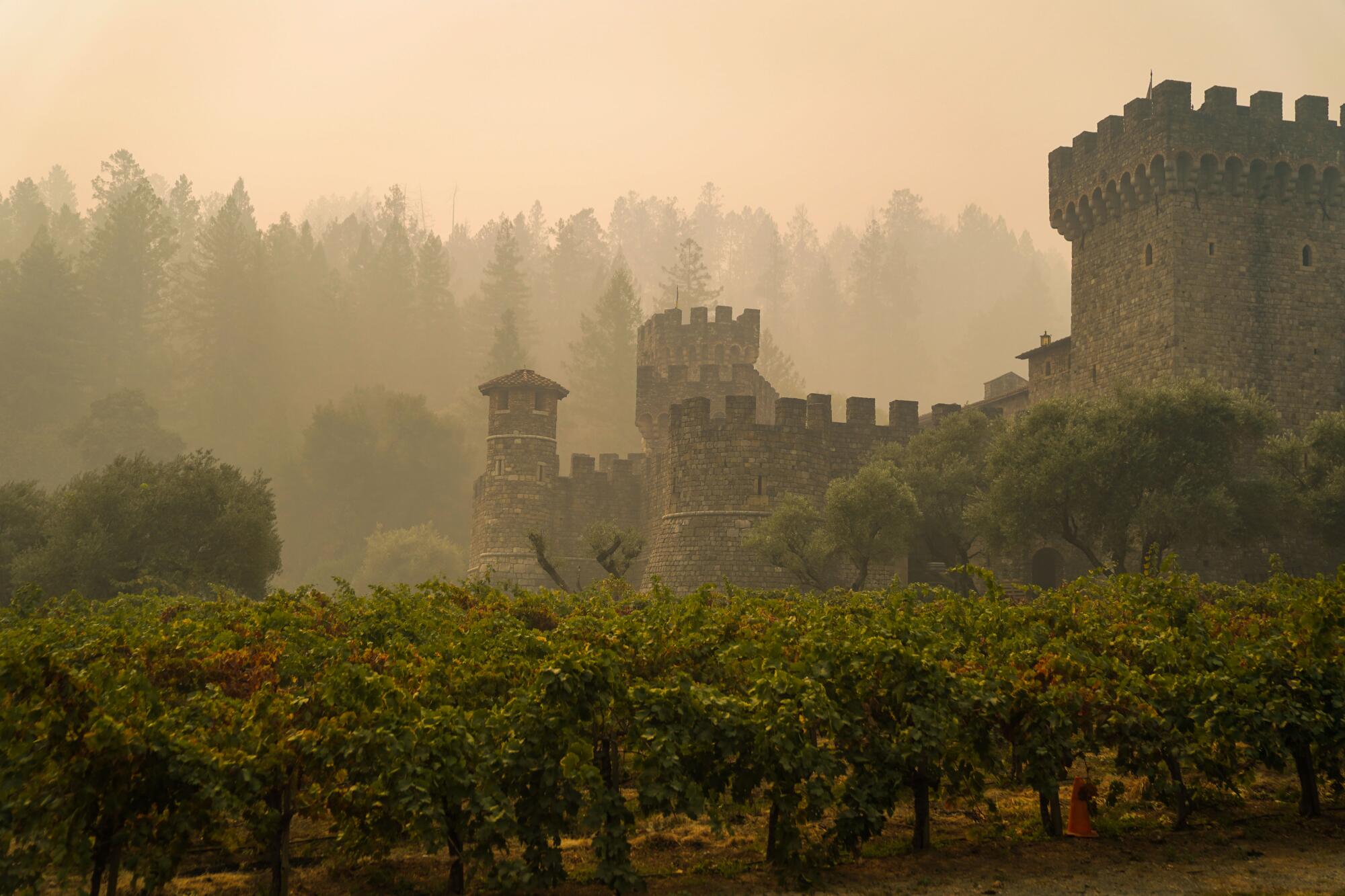
“Smoke can drastically affect the quality of wine made from affected grapes,” said Lewis Perdue, publisher and executive editor of Wine Industry Insight. “It is called smoke taint and does drastically affect the quality of wine. So much so, that many wineries have decided not to make a 2020 vintage.”
Climate change, which has been linked to much of California’s current apocalyptic wildfire season, can also take a toll on sensitive grapes, particularly Pinot Noir, which depends on the cool fogs that roll into the San Francisco Bay from the Pacific Ocean.
“I’ve seen climate change on a real basis in my 60 years of farming,” Tofanelli said. “I have varietals that don’t do as well now as they did before, because they’re more heat sensitive. They’re going to have to plant different varietals to adapt.”
On Tuesday, a thick blanket of smoke covered Napa Valley, the haze descending from the winding mountain roads into downtown Calistoga, where the town seemed all but closed due to evacuation orders. Ash peppered cars and vineyards, and the smell of soot clung to the air.
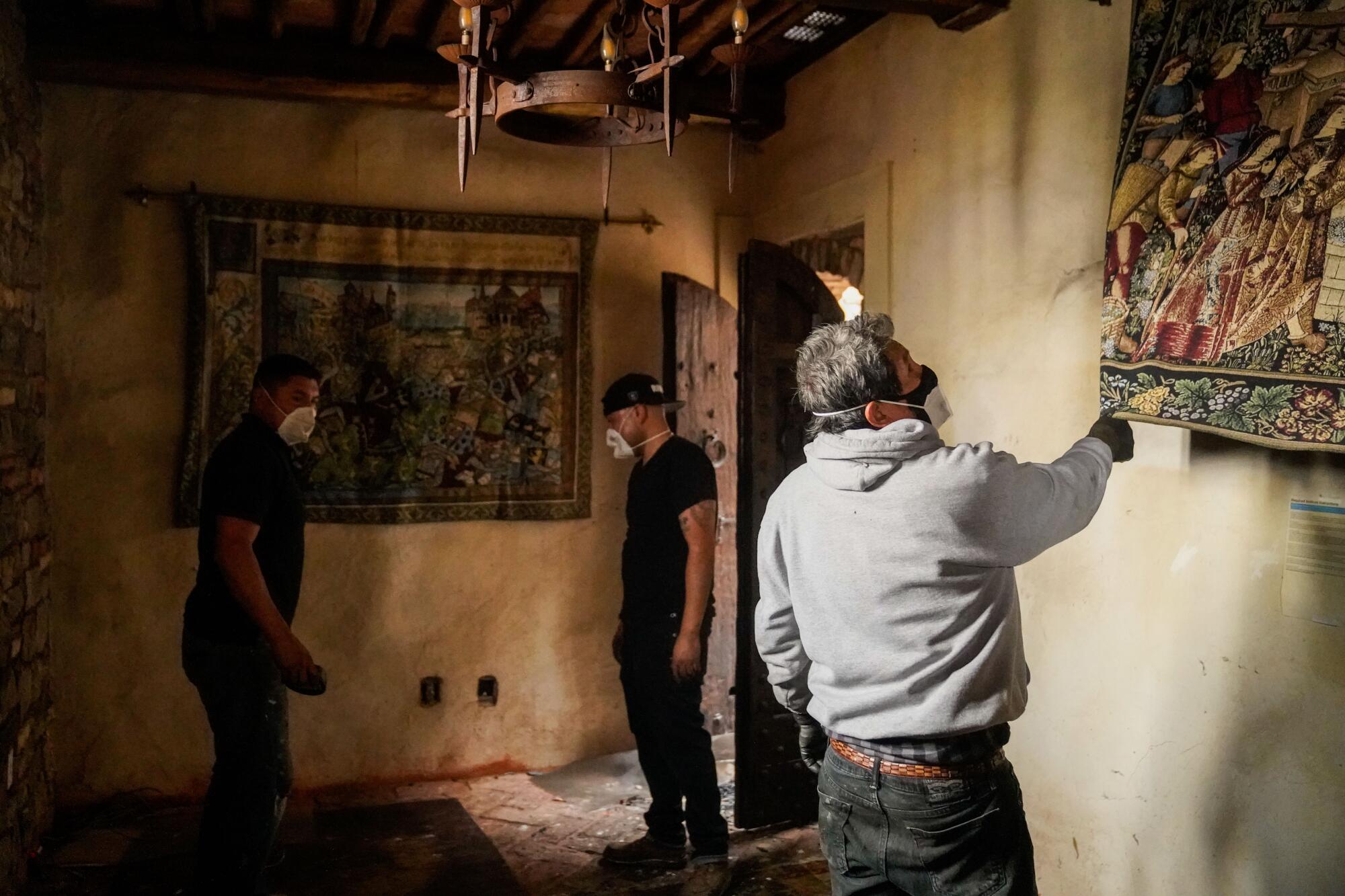
Spot fires flared on the sides of State Route 29, the main gateway to Napa, and they popped up on winding roads where trees smoldered. Some timbers fell over as cars drove past.
The Glass fire is now one of more than 20 wildfires burning in California, in what has been called the most destructive wildfire season in the state’s history. Although the region has endured fires before, this one is coming amid a global pandemic that has already hammered its tourism and economy.
“Restaurants all over the nation were shutting down, which affects how much wine they move, which affects sales from our wineries,” said Michael Haney, executive director of the Sonoma County Vintners, an industry group that represents more than 300 local wineries.
This week’s fire destroyed the restaurant at the Meadowood Estate, a food destination with a coveted three stars from the Michelin Guide.
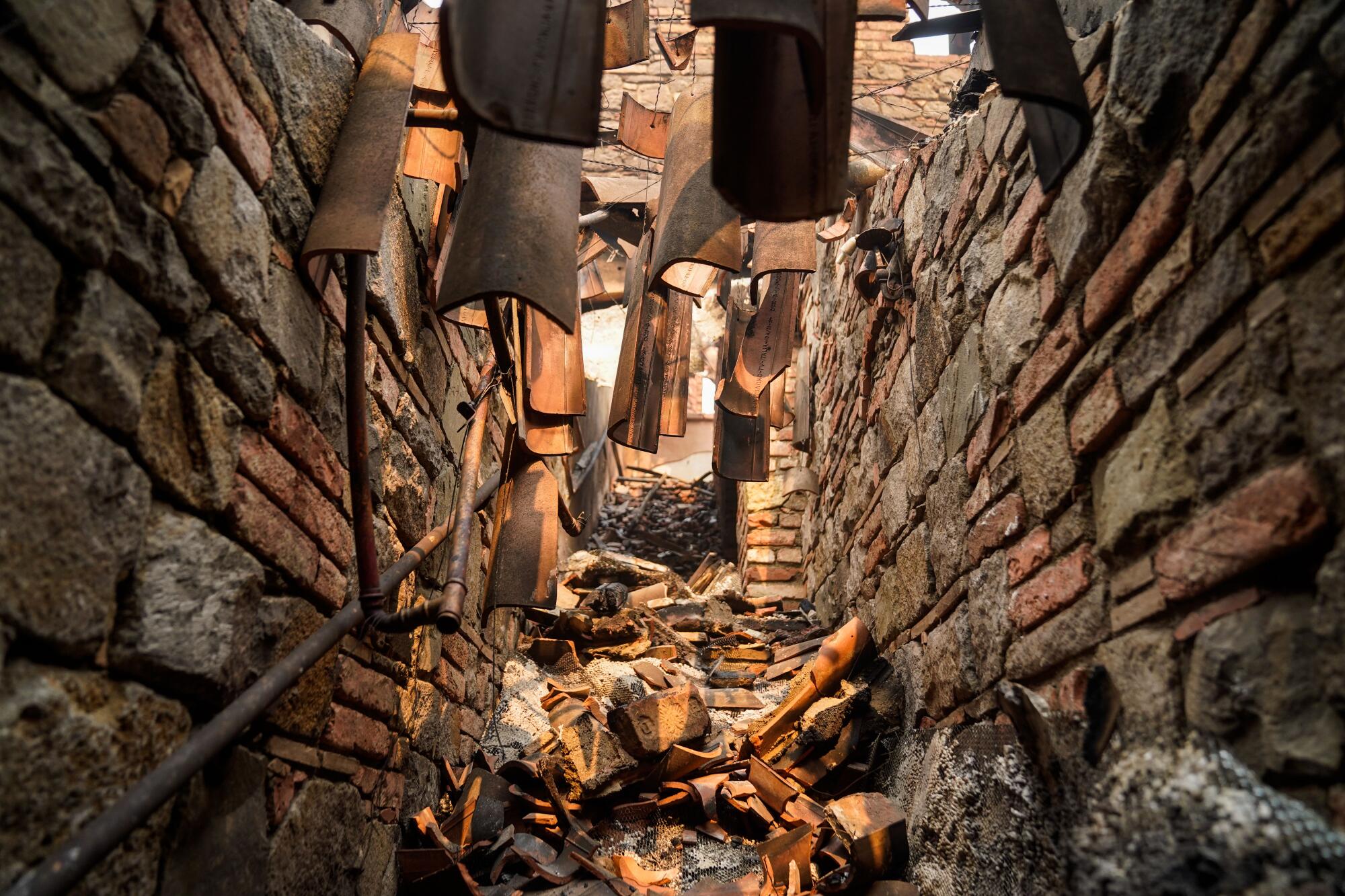
Haney said many wineries saw visitor numbers dip during the early months of the shutdown, just as they did after the Tubbs fire.
But those numbers were starting to improve with social distancing guidelines and approval of outdoor gatherings, he said. It was the year’s early wildfire season that quickly put a stop to that progress.
Yet Haney said there was at least one cause for hope: Napa and Sonoma vintners are adaptable.
“While these fires, and of course the pandemic, are something extraordinary in everyone’s life, they have had to mitigate and address challenges for decades and generations,” Haney said of the region’s winemakers. “I have had nobody — and I mean not one grower or vintner — say ‘I’m out of here.’”
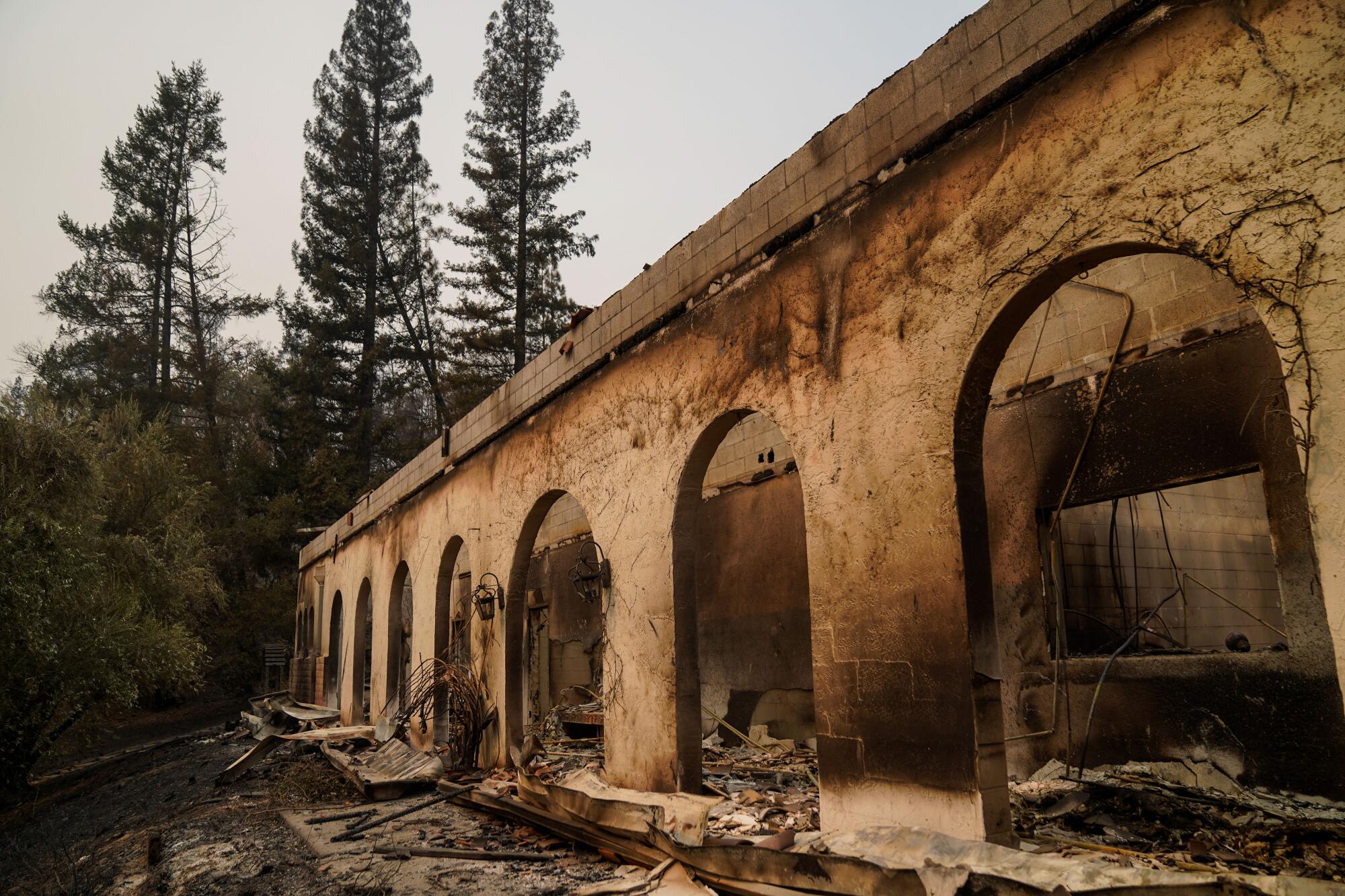
Bob Knebel, president and CEO of Rombauer Vineyard in Napa, felt similarly optimistic. The Glass fire spared his property, which sits on a road now flanked by smoldering brush and trees.
“We’re here for the long run, and we love it here,” he said.
A lifelong Californian, Knebel said the word “wildfire” could be synonymous with “renewal.” Everything burned by wildfires will turn into ashen fertilizer, which will lead to a beautiful green spring, he said.
Georg Salzner, president of Castello di Amorosa, said about 120,000 bottles — or 10% of the winery’s stored product — was damaged by the Glass fire, representing each type of wine they make.
Record heat. Raging fires. What are the solutions?
Get Boiling Point, our newsletter about climate change, the environment and building a more sustainable California.
You may occasionally receive promotional content from the Los Angeles Times.
“You’re never prepared for something like that,” he said, standing in front of the wreckage. “We did have fires in the last four years and we’re kind of getting used to it, but when it really happens to you it’s much worse.”
Still, he said, he won’t let the fire get in the way of making wine and continuing to serve customers. “I think people will want to come,” he said.
Tofanelli is now anxiously awaiting an update on the status of his grapes, but he is similarly hopeful.
“I’m standing here with an N-95 mask in the smoke and trying to assess what I’m going to be doing,” he said. “But if the vineyard’s still here, I imagine I’ll be out there next February, pruning the vines and plugging along.”
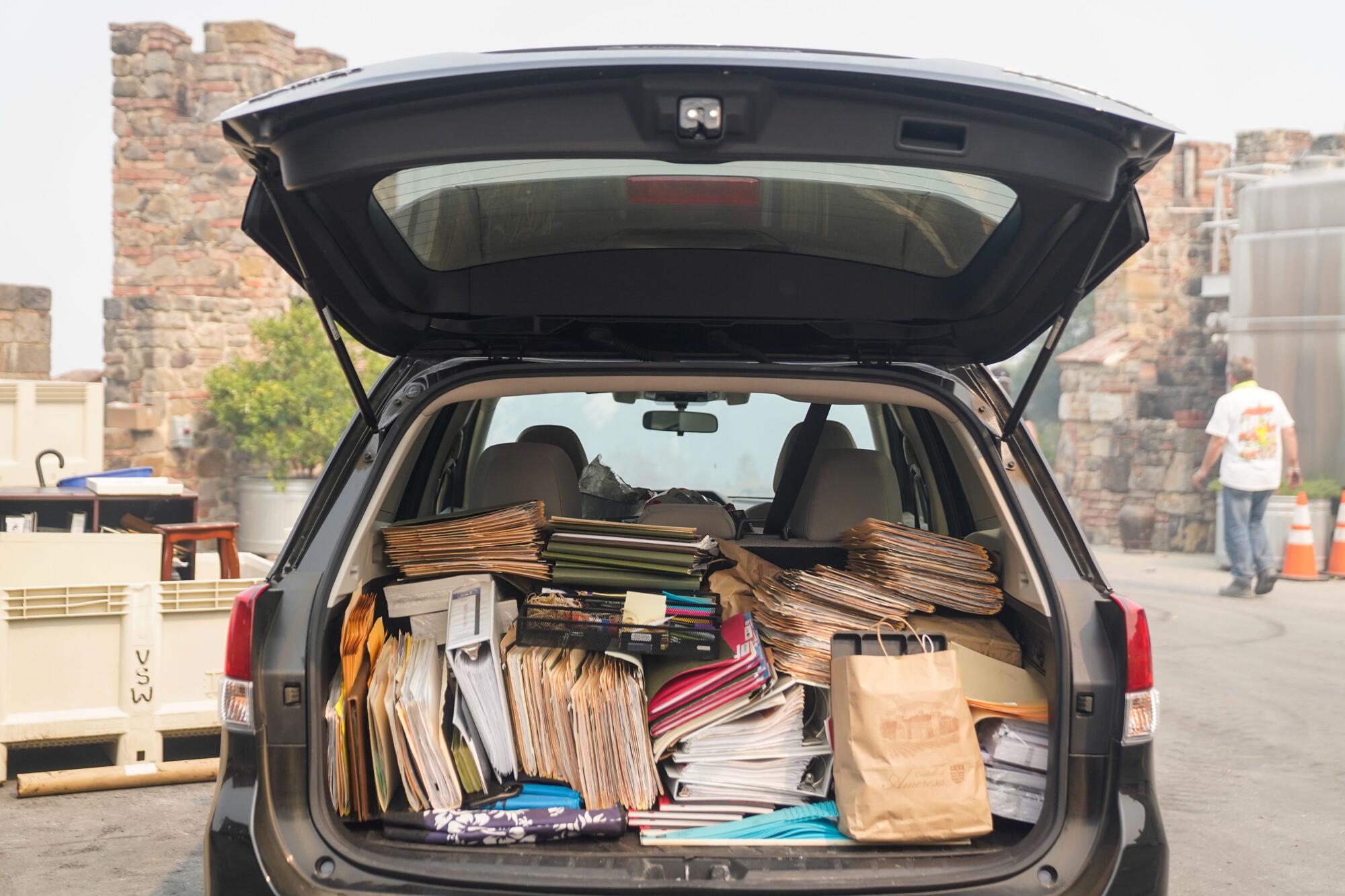
More to Read
Sign up for Essential California
The most important California stories and recommendations in your inbox every morning.
You may occasionally receive promotional content from the Los Angeles Times.
